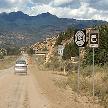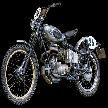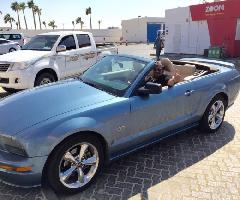
10 Tips for Riding the Bike in the Rain

- Category :Biking Tips
When the wet season comes in. The rain becomes a frequent training companion. Here are some tips from two uniquely qualified riders John Tomac and Brian Walton on how to conquer the wet stuff and how to train during the adverse rainy weather.When the wet season comes in. The rain becomes a frequent training companion. Here are some tips from two uniquely qualified riders John Tomac and Brian Walton on how to conquer the wet stuff and how to train during the adverse rainy weather. 1. CLOTHING: “It’s important to wear glasses because your vision is reduced,” says Tomac. “I prefer clear lenses treated with Rain-X to help the water run off.” For cold weather it is recommended to wear the following gear: neoprene socks, or regular ones covered with plastic bags; two pairs of shoe covers (one thick, one thin); several layers of wicking fabric on the upper body; and a wool hat. 2. DURATION: If you’re training in the wet, remove the pressure to complete a long intense ride.
Take satisfaction in the fact that you’re riding when most others stayed home. “And no matter what, you should never stop on a rainy ride,” says Walton. “Your body temperature goes down, and you can get a chill.” 3. SKILL DRILLS: Tomac suggests that you improve your wet-weather skills by riding a mountain bike in loose dirt, or practicing skidding your road bike in a wet parking lot. The idea is to grow accustomed to the bike moving beneath you. 4. CLIMBING: You can’t stand, lean forward, and power the rear wheel on a steep climb like you can in fry conditions because you may lose traction. “Move your weight back slightly, or stay seated,” advises Tomac. “Weight shifts are common in mountain biking, but most road racers aren’t used to doing it.” 5. SPECIAL EQUIPMENT: “In Vancouver we get so much rain that even racers use fenders,” says Walton. “It’s a matter of etiquette.” To prevent spraying trailing riders, a mud flap is added to the rear fender. Consistent rain riding can also take toll on your drivetrain. “When you get back, hose off your bike and oil the chain,” says Walton. 6. CORNERING: Go slower and follow the widest, most gradual line that road and traffic conditions allow. “Most crashes occur in corners,” says Tomac. “You just can’t lean as much. Keep the bike slightly more upright.” 7. TIRES: “For a rainy criterium I’ll lower my tire pressure to about 75 psi (for better traction),” says Walton. “However, in a long road race I’ll run normal pressure because I don’t want to add rolling resistance. Some riders apply lemon juice or vinegar to their tires to increase traction but I don’t believe in it.” 8. SURFACES: “Cobbles are always bad, but so are extremely smooth surfaces,” says Tomac. “Painted lines can be slippery. Also avoid puddles—you never know how deep they are.” Other danger spots include metal surfaces and wet leaves. And the first minutes of a rainstorm can be dangerous until the accumulated road oils has been washed away. 9. BRAKING: “Don’t slam on your brakes in a group or someone into you from behind,” says Tomac. “And don’t use your front too much, particularly in corners. Try to brake beforehand.” Another tip: In anticipation of a sudden stop, apply the brakes lightly first to wipe water from the rims. This will save a few valuable yards. 10. PACK RIDING: “One of the most common causes of a crash when racing in the rain is overlapping wheels, says Walton. “People ride too tightly and the braking is poor. But it’s hard to avoid this because in a race you simply can’t afford to drop back.” Consequently, lightly test your brakes to gauge the required stopping distance, and always be aware of your escape route relative to the rider in front.
-
Previous
Selling Your Old BiKe or Car
Related Articles
The Motorcycle And The Military Use
The Motorcycle as we know it is a derived from the two-wheeled bicycle. Comparatively, its history begins from the middle of the nineteenth century.
Classic Car Show At Bobo's Cafe Is Something To Do On S
Coverage of weekly Car Show and Oldies Groove at Bobo's Cafe in Somers, NY.
A Personal Review Of The Mustang- The Original Muscle
The Mustang is an iconic car and traces its pedigree to the sixties of the last century. It still remains in demand as a muscle car with an engine that develops 396 BHP and takes you to 180 MPH in a jiffy.
Post Your Comment
There are no comments yet.








